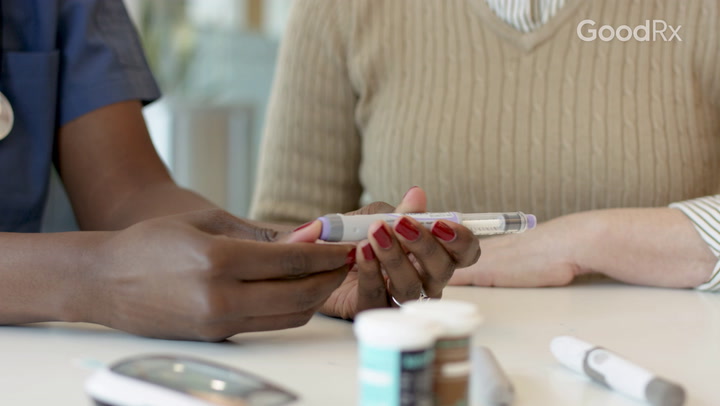
Enbrel Dosages: Your GoodRx Guide
Key takeaways:
Enbrel (etanercept) is a common biologic medication. It treats autoimmune disorders such as rheumatoid arthritis, plaque psoriasis, and psoriatic arthritis.
Enbrel is injected under the skin, typically once a week. Specific Enbrel dosages vary based on your age, body weight, and the condition you have. Adults typically need larger doses than children.
Enbrel doesn’t generally require dosage adjustments if your liver or kidneys aren’t functioning optimally. But you may need to stop using Enbrel temporarily if you develop a serious infection.
Access savings on related medications
Table of contents

Biologics are common treatments for autoimmune disorders. There are many biologics on the market, and they work in different ways.
Enbrel (etanercept) is a biologic that treats conditions such as rheumatoid arthritis (RA), plaque psoriasis, and psoriatic arthritis. It indirectly blocks tumor necrosis factor (TNF). TNF proteins are a key part of your immune system that can mistakenly go haywire in autoimmune disorders. If left unchecked, they can trigger your immune system to attack your own body.
If you’re prescribed Enbrel, you’ll inject it using a prefilled syringe, autoinjector, or single-dose vial. But not every condition requires the same dose of Enbrel. Understanding recommended Enbrel dosages — and what to do in case of a missed dose or an overdose — should help you get the most out of the medication.
Prescription Savings Are Just the Beginning
See what other benefits you qualify for—from cashback cards to cheaper insurance.

What’s the typical Enbrel dosage for adults?
Recommended Enbrel dosages for adults depend on what you’re using it for. The usual adult dosage is 50 mg once a week. This is the case for most autoimmune disorders it’s approved for, such as RA, psoriatic arthritis, and ankylosing spondylitis.
The recommended dosage is slightly different for plaque psoriasis. You’ll initially inject 50 mg twice a week for 3 months, and then your dose will likely drop down to 50 mg once a week. This weekly dose will be your “maintenance” dose.
Alternatively, your rheumatologist may suggest a different initial dose of Enbrel injections for plaque psoriasis. Instead of injecting 50 mg twice a week for the first 3 months, you may be asked to inject 25 mg or 50 mg once per week. Whatever the case, make sure to follow your prescriber’s directions.
What’s the typical Enbrel dosage for children?
Recommended Enbrel dosages for kids are based on your child’s body weight — no matter what health condition they have. What’s more, there is no pediatric “starting” dose or “maintenance” dose. The dose will only change as your child grows and has weight changes.
The Enbrel dose for children under 63 kg (138 lbs) is 0.8 mg per kilogram of body weight. This dose is given once weekly. For example, if your child weighs 50 kg (about 110 lbs), their weekly dose would be 40 mg. If your child weighs 138 lbs or more, they’d likely receive the adult dosage of 50 mg once weekly.
You may need to draw your child’s dose from one or two single-dose vials to deliver an exact dose. It’s important that you measure your child’s dose carefully before giving it to them, as is the case with any medication. You can always double check with your prescriber or pharmacist if you’re unsure about your child’s Enbrel dose.
Good to know: Enbrel has slightly different uses in children compared to adults. It’s FDA approved to treat polyarticular juvenile idiopathic arthritis and juvenile psoriatic arthritis in kids as young as 2 years old. It can also treat plaque psoriasis in kids as young as 4.
Are there any dosage adjustments for medical conditions?
In most cases, no. There aren’t many Enbrel injection dosage adjustments for medical conditions.
Some medications require dosage adjustments if you have liver or kidney problems. This is because the liver is often responsible for breaking down medications in your body. And the kidneys remove them through your urine.
However, Enbrel is not one of these medications. Enbrel is a protein that is instead broken down into smaller pieces in your body in a process called proteolysis. This is similar to how you might chop onions while preparing dinner. These smaller pieces, or amino acids, are reused to make other proteins that your body needs following proteolysis.
Enbrel hasn’t been formally studied in people with kidney or liver disease. However, there are reports showing people with kidney or liver failure may tolerate Enbrel.
Understanding Enbrel safety risks: Here’s what you need to know about possible Enbrel side effects.
Treating psoriatic arthritis: Uncover key information about Enbrel’s effectiveness, medication interactions, and more when it comes to finding relief from psoriatic arthritis.
Financial considerations: Find different ways to save on your Enbrel prescription, whether it’s through your insurance, a patient assistance program, or a GoodRx coupon.
There is one exception. You may need to temporarily or permanently stop Enbrel if you develop a serious infection. Tell your rheumatologist if you develop infection symptoms, such as a fever, cough, and shortness of breath. They can advise you on next steps so your treatment remains as safe and effective as possible.
What happens if you miss a dose of Enbrel?
Don’t panic if you miss a dose of Enbrel. Administer Enbrel as soon as you can if you remember within a day of your dose. Then, inject your next dose at the regularly scheduled time.
However, if it has been longer than a day, reach out to your healthcare professional for further instructions. They can tell you if you should still inject the dose or skip it entirely.
Don’t administer two or more doses of Enbrel to make up for a missed dose. This increases the risk of experiencing Enbrel side effects. Calendar and alarm reminders can help you ensure that you receive your Enbrel injection as scheduled. Reach out to your rheumatologist if you’re ever unsure what to do.
What should you do if you inject too much Enbrel?
Accidentally injecting more Enbrel than prescribed is possible — especially if you’re measuring out a dose from one or two single-dose vials rather than using a prefilled syringe or autoinjector.
A slightly larger dose than intended usually won’t cause severe harm. But it’s best to err on the side of caution. Contact your rheumatologist or pharmacist if you think you’ve injected too much Enbrel. They can offer guidance, such as watching out for side effects like infections, injection site reactions, and others. You can also consider reaching out to Poison Control online or at 1-800-222-1222 for help if they’re not available.
How to save on Enbrel
There are ways to save on Enbrel, which is currently only marketed as a reference (“brand-name”) medication. GoodRx can help you navigate between copay savings cards and patient assistance programs to save money on your prescription.
Save with a copay savings card. If you have commercial insurance, you may be eligible to pay as little as $0 for Enbrel using a savings card from the manufacturer.
Save with patient assistance programs. If you’re uninsured or underinsured, you may be eligible for Enbrel’s patient assistance program, which offers the medication free of charge.
The bottom line
Enbrel (etanercept) is a biologic medication that treats autoimmune disorders such as rheumatoid arthritis, plaque psoriasis, and psoriatic arthritis. Recommended Enbrel dosages vary based on age, body weight, and the condition being treated.
The usual adult Enbrel dosage is 50 mg once weekly. But people prescribed Enbrel for plaque psoriasis generally require a more frequent dose during the first 3 months of treatment.
Children's doses are based on body weight, and you generally won’t need dosage adjustments if you have liver or kidney problems. However, you may need to pause treatment if you develop a serious infection.
Why trust our experts?



References
Cho, S., et al. (2010). Etanercept treatment in rheumatoid arthritis patients with chronic kidney failure on predialysis. Rheumatology International.
Combe, B. (2008). Update on the use of etanercept across a spectrum of rheumatoid disorders. Biologics: Targets and Therapy.
Immunex. (2024). Enbrel- etanercept solution, Enbrel- etanercept [package insert].
Naniwa, T., et al. (2013). Successful use of higher-dose etanercept for multirefractory systemic flare of adult-onset still’s disease with liver failure with no response to tocilizumab therapy. Case Reports in Rheumatology.
Was this page helpful?
Related Articles
Browse medications
View AllResearch prescriptions and over-the-counter medications from A to Z, compare drug prices, and start saving.




























